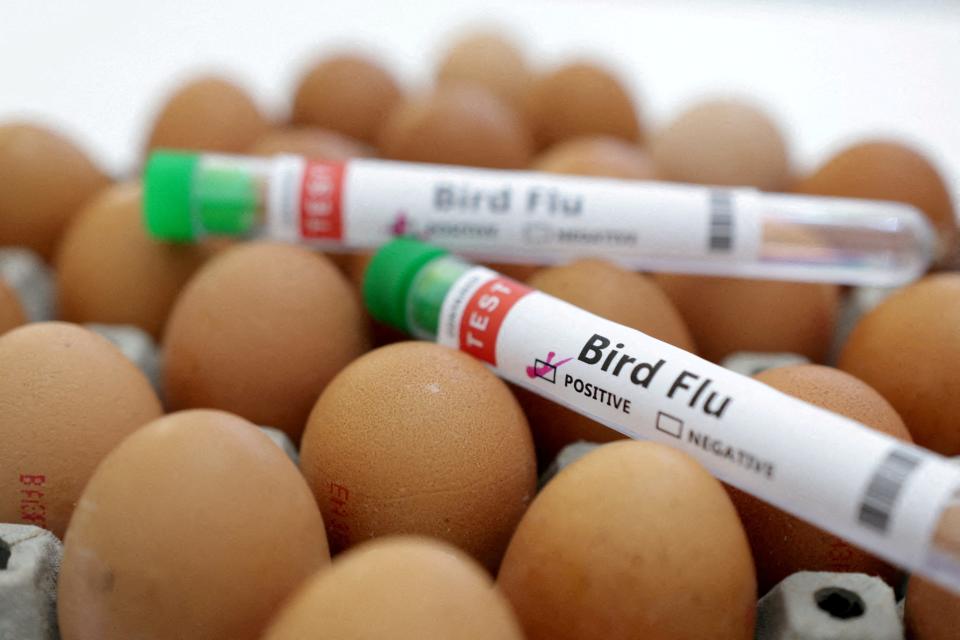Bird flu in Michigan: H5N1 Symptoms, what outbreak means for pets, why wastewater matters
Called highly pathogenic avian influenza, the H5N1 bird flu virus making headlines in Michigan and across the U.S. got its name because it is so well adapted to infecting and killing birds. H5N1 has been circulating in the U.S. since January 2022 and globally since 2021.
What has scientists and researchers worried, however, is that the virus is increasingly spilling over to infect other animals, such as seals and racoons, bobcats, foxes, cows and alpacas — and now, even humans — and how little we know about how widespread the infections actually are.
Testing for H5N1 infections is voluntary. Farmers aren't required to test their cows and people with symptoms aren't required to be tested, either.
There have been only three known human cases of the virus in farmworkers in the U.S. this year — two in Michigan, and one in Texas.
All three had mild illness and fully recovered, but some scientists are concerned that the more the virus spreads, the greater chance it has to mutate to become better at infecting people — potentially making humans sicker and triggering an outbreak of a new, novel flu that could be reminiscent of the early days of the COVID-19 pandemic.
One tool that can be used to assess how much the virus is spreading in a community is to test the wastewater.
WastewaterSCAN, which is based at Stanford University, did just that. It monitors infectious diseases through wastewater systems, and, earlier this month, publicly posted the results of H5 influenza A virus testing of samples from 38 of the 50 states and the District of Columbia dating to May 21.
It found that the levels H5 influenza in wastewater in Michigan were high at every site it tested, even in places where there aren't known to be infections among cattle herds, like the wastewater treatment plants in Jackson and Warren.
What does wastewater testing for H5 bird flu mean?
Wastewater testing for viruses often gives the first clue that there's widespread infection in a specific area. But without more precise and refined testing, samples from a wastewater treatment plant with a large catchment area don't reveal exactly where the virus is coming from or show whether it's people or cows, other creatures, (or all of them) that are infected.
The virus particles detected in the wastewater could be coming from runoff from cattle farms with infected cows or other animals, discharge of untreated milk into the wastewater system from production facilities, or from the excrement of sick people.
In WastewaterSCAN's testing, only six states had detections of the virus in the wastewater — California, Idaho, Iowa, Minnesota, Michigan and Texas — as of Monday. Of them all, Michigan was the only state with high levels detected at each of its six testing sites: Ann Arbor, Jackson, Jenison, Mount Pleasant, Traverse City and Warren.
Even though Jackson County has yet to identify any infections among dairy cattle with the H5N1 influenza A virus, the highest number of positive wastewater samples, 10, were identified at the city of Jackson's Wastewater Treatment Plant from May 21-June 9.
The city of Warren's Wastewater Treatment Plant had the second highest number of H5 influenza detections in wastewater samples statewide with five identified from May 21-June 11, but Macomb County also has no known dairy cattle outbreaks.
More: Scientists try to solve bird flu mystery: Why there's so much virus in Michigan wastewater
What are the symptoms of bird flu?
The current strain of the H5N1 virus, which is subtype 2.3.4.4b, has so far caused mild symptoms in the known human cases, according to the U.S. Centers for Disease Control and Prevention, such as eye infections, cough and nasal discharge.
Following are details of the known human cases so far:
A Texas farm worker who was exposed to sick cows in March contracted H5N1. The worker had only one symptom: eye redness consistent with conjunctivitis or pink eye. The person was treated with an antiviral flu drug, was asked to isolate to prevent potentially spreading the virus, and recovered. This was the first known case of cow-to-human transmission in the U.S.
A Michigan farmworker exposed to cows with the H5N1 virus was splashed in the eye by untreated cow's milk. In late May, he also developed an eye infection, and completely recovered, said Dr. Natasha Bagdasarian, Michigan's chief medical executive. This was the second known case of cow-to-human transmission.
A second Michigan farmworker developed upper respiratory tract symptoms, including cough without fever, and eye discomfort with watery discharge, after working closely with infected cows on a separate farm in late May. This person also fully recovered. This was the third known case of cow-to-human transmission.
In April 2022, a Colorado farm worker who culled poultry suspected of being infected with the H5N1 flu virus reported feeling fatigue for several days. The person tested positive for the virus and was isolated and also treated with a flu antiviral drug. This was a case of bird-to-human transmission.
How does the bird flu affect animals?
The current H5N1 strain is almost always deadly in poultry, but produces a puzzling array of symptoms in other animals.
In cows, this type of bird flu seems to infiltrate the mammary system. High levels of the virus have been detected in their milk, slowing production and sometimes causing thick, clotted milk. Cows get fevers, and don't eat and drink like they should. Sometimes pregnant cows miscarry.
Barn cats that drank raw milk from sick cows also were infected with bird flu and developed neurological symptoms, eye and nose discharge; many died. Fox kits also have been reported to have neurologic symptoms when they get H5N1 infections, including tremors, blindness and lethargy, before they die.

More: Avian flu has spread to cows, milk — and experts worry human outbreak could be next
Are my pets safe from bird flu?
It depends on the pet. Of course, birds are very much at risk from the virus and can contract it through exposure to other infected birds — wild or domestic — or their feces, mucus or saliva.

Cats also are extremely susceptible to the H5N1 bird flu and are at risk of developing neurological symptoms and dying. New research suggests ferrets get extremely sick, too, and can die from the virus.
While dogs can get infected by the H5N1 bird flu, reports of illness among dogs are rare. When they get sick, the symptoms have been mild, the CDC reported earlier this month.
Veterinarians urge pet owners to ensure their cats and dogs don't hunt birds or scavenge the carcasses of birds or other animals to avoid the risk of infection. They also should avoid contact with other infected animals, such as cows and poultry and unpasteurized milk.
Is it safe to drink milk and eat eggs and beef?
The studies so far conducted by the U.S. Food and Drug Administration suggest pasteurized milk and dairy products are safe to eat and drink, as are fully cooked meat and eggs.
In one out of 109 samples of beef tested in late May by the U.S. Department of Agriculture’s Food Safety and Inspection Service, H5N1 viral particles were detected in muscle tissue. In ground beef that was inoculated with high levels of virus, cooking it to at least 145 degrees (medium) or 160 degrees (well done) killed the H5N1 virus.
"Even cooking burgers to 120 (rare) degrees, which is well below the recommended temperature, substantially inactivated the virus," the USDA reported.
And though similar testing of commercial milk found H5N1 viral fragments, those particles were inactivated by pasteurization and were unable to cause infection. Raw milk from infected cows, however, has been shown to be a risk for infection.
Will my annual flu shot protect me from this virus?
While scientists are working to develop a flu vaccine that could work against the current strain of H5N1 virus, the CDC reported Friday that blood sample tests suggest Americans have "extremely low to no population immunity" to the H5N1 virus strain circulating now. Seasonal flu vaccines don't appear to have produced any antibodies to the virus.
That means "most of the population would be susceptible to infection from this virus if it were to start infecting people easily and spreading from person-to-person," the CDC said.
Contact Kristen Shamus: kshamus@freepress.com. Subscribe to the Free Press.
This article originally appeared on Detroit Free Press: Bird flu in Michigan 2024: H5N1 symptoms, safety for humans, pets
